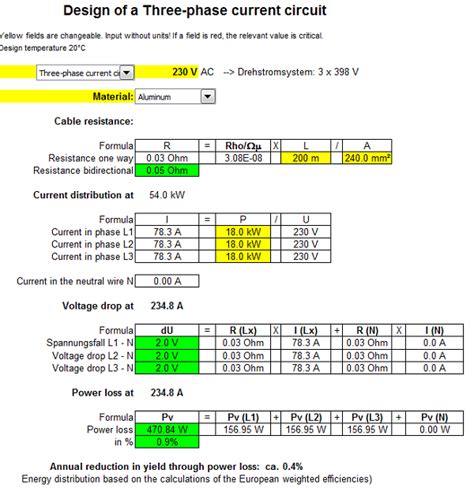Introduction to PCB Current Calculators
A PCB (Printed Circuit Board) current calculator is an essential tool for engineers and designers working on electronic projects. It allows you to accurately determine the current carrying capacity of traces on a PCB, ensuring that your design can handle the required current without overheating or causing damage.
What is a PCB?
A PCB is a flat board made of insulating material, such as fiberglass or plastic, with conductive copper traces printed on its surface. These traces connect various electronic components, such as resistors, capacitors, and integrated circuits (ICs), to create a functional electronic circuit.
Why is Current Calculation Important?
Current calculation is crucial in PCB design because it helps prevent traces from overheating and potentially causing damage to the board or components. If a trace is too thin for the amount of current it needs to carry, it can lead to excessive heat generation, which may cause the trace to melt or break, resulting in circuit failure.
Factors Affecting Current Carrying Capacity
Several factors influence the current carrying capacity of a PCB trace:
- Trace width: Wider traces can carry more current than narrower ones.
- Trace thickness: Thicker traces have a higher current carrying capacity compared to thinner traces.
- Copper weight: The amount of copper used in the PCB, measured in ounces per square foot (oz/ft²), affects the current carrying capacity.
- Temperature rise: The maximum allowable temperature rise above ambient temperature determines the current limit for a given trace.
- Ambient temperature: Higher ambient temperatures reduce the current carrying capacity of traces.
Using a PCB Current Calculator
A PCB current calculator typically requires the following inputs:
- Trace width
- Trace thickness or copper weight
- Maximum allowable temperature rise
- Ambient temperature
Once these parameters are entered, the calculator will provide the maximum current carrying capacity for the specified trace.
Example Calculation
Let’s consider an example where we need to determine the current carrying capacity of a trace with the following specifications:
- Trace width: 0.5 mm
- Copper weight: 1 oz/ft²
- Maximum allowable temperature rise: 10°C
- Ambient temperature: 25°C
Using a PCB current calculator, we find that the maximum current carrying capacity for this trace is approximately 1.8 A.

PCB Current Calculator Tables
To make it easier for designers to quickly determine the current carrying capacity of traces, manufacturers often provide tables based on standard trace widths and copper weights. Here’s an example table for 1 oz/ft² copper weight and a maximum temperature rise of 10°C:
| Trace Width (mm) | Current Carrying Capacity (A) |
|---|---|
| 0.25 | 0.5 |
| 0.5 | 1.8 |
| 0.75 | 3.2 |
| 1.0 | 4.7 |
| 1.5 | 7.8 |
| 2.0 | 10.9 |
Advanced Considerations
Multiple Layers and Vias
In more complex PCB designs, current may flow through multiple layers using vias (vertical interconnect access). When calculating the current carrying capacity in such cases, designers must consider the total cross-sectional area of the vias and the traces on each layer.
High-Frequency Signals
For high-frequency signals, additional factors come into play, such as skin effect and dielectric losses. In these cases, more advanced calculators or simulation tools may be necessary to accurately determine the current carrying capacity and ensure signal integrity.
Frequently Asked Questions (FAQ)
-
Q: What happens if I exceed the current carrying capacity of a trace?
A: Exceeding the current carrying capacity can lead to excessive heat generation, causing the trace to melt or break, potentially resulting in circuit failure. -
Q: Can I use a thinner trace if I have limited space on my PCB?
A: While using a thinner trace can save space, it’s essential to ensure that the trace can still handle the required current. If necessary, consider using a higher copper weight or multiple layers to increase the current carrying capacity. -
Q: How does ambient temperature affect current carrying capacity?
A: Higher ambient temperatures reduce the current carrying capacity of traces because there is less margin for temperature rise before reaching the maximum allowable limit. -
Q: What is the difference between trace thickness and copper weight?
A: Trace thickness is the physical thickness of the copper trace, typically measured in microns or mils. Copper weight, on the other hand, is the amount of copper used in the PCB, measured in ounces per square foot (oz/ft²). Copper weight is more commonly used in PCB specifications. -
Q: Can I use a PCB current calculator for high-frequency designs?
A: While a basic PCB current calculator can provide a starting point, high-frequency designs often require more advanced calculators or simulation tools to account for factors such as skin effect and dielectric losses.
Conclusion
PCB current calculators are valuable tools for engineers and designers working on electronic projects. By accurately determining the current carrying capacity of traces, these calculators help ensure that PCBs can handle the required current without overheating or causing damage. When using a PCB current calculator, consider factors such as trace width, copper weight, temperature rise, and ambient temperature. For more complex designs involving multiple layers, vias, or high-frequency signals, advanced calculators or simulation tools may be necessary to ensure optimal performance and reliability.

No responses yet